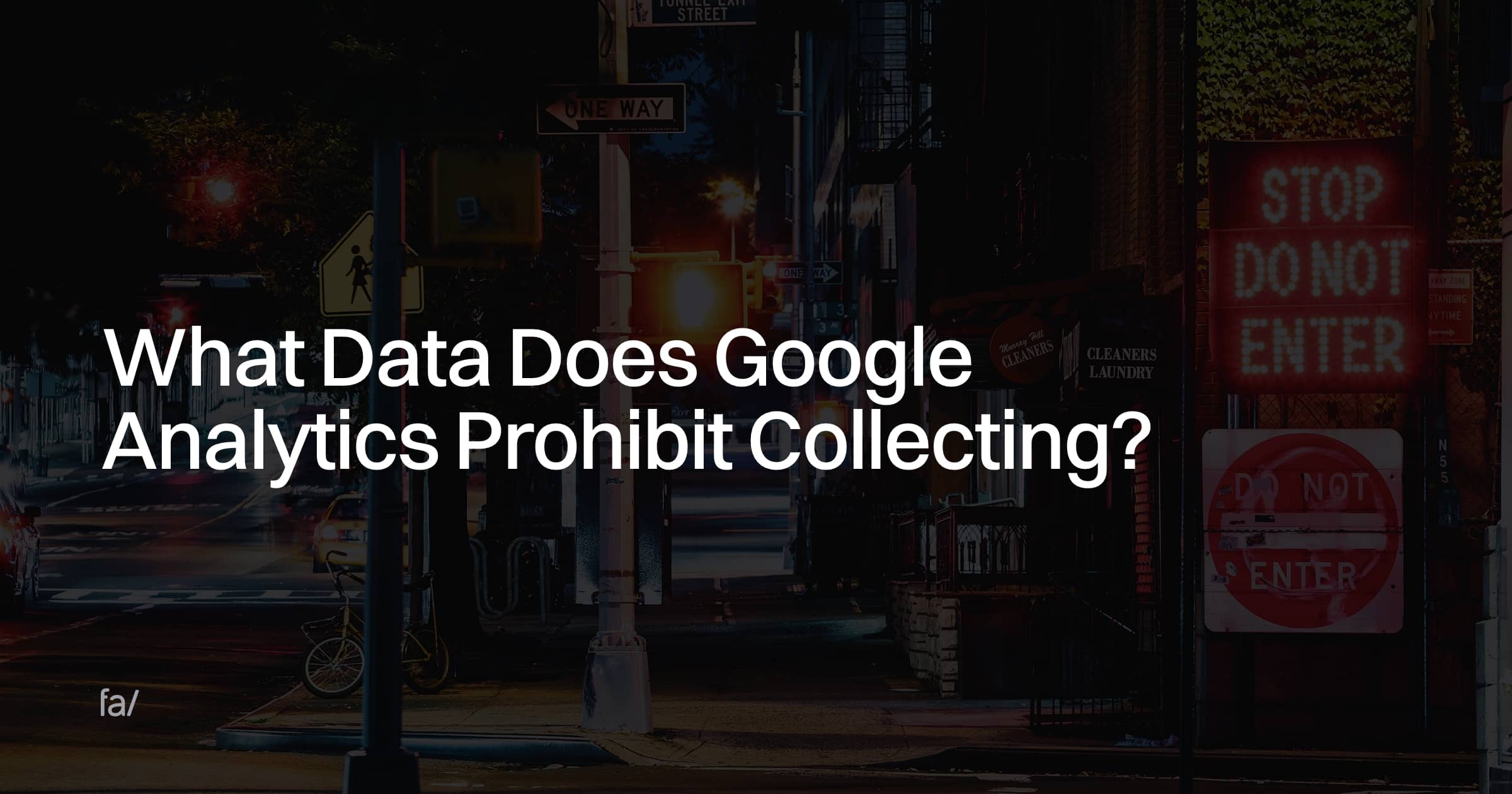Opening Insights: Comprehending What Data Does Google Analytics Prohibit Collecting
Opening Insights: Comprehending What Data Does Google Analytics Prohibit Collecting
Blog Article
Grasping the Art of Conquering Information Collection Limitations in Google Analytics for Better Decision-Making
In the world of electronic analytics, the ability to essence significant insights from information is paramount for informed decision-making. Google Analytics stands as a powerful tool for companies seeking to comprehend user habits, track conversions, and optimize their on-line presence. Information collection restrictions within this system can hinder the accuracy and deepness of the info gathered. What Data Does Google Analytics Prohibit Collecting?. To absolutely harness the potential of Google Analytics for critical decision-making, mastering the art of getting over these restrictions is essential. By utilizing innovative techniques and calculated strategies, organizations can boost their information quality, unlock hidden understandings, and pave the method for even more efficient and educated choices.
Information Quality Evaluation
Information top quality evaluation includes reviewing various aspects such as precision, efficiency, consistency, and timeliness of the information. One crucial aspect to think about is data precision, which refers to exactly how well the data mirrors the true values of the metrics being measured.
Completeness of data is an additional essential factor in examining data top quality. Consistency checks are also crucial in information quality evaluation to recognize any inconsistencies or abnormalities within the data set. By focusing on information quality evaluation in Google Analytics, services can boost the reliability of their analytics records and make even more educated choices based on exact understandings.
Advanced Tracking Techniques
Using sophisticated monitoring strategies in Google Analytics can considerably improve the deepness and granularity of information accumulated for even more thorough evaluation and insights. One such technique is event monitoring, which permits for the surveillance of specific interactions on a site, like clicks on buttons, downloads of data, or video views. By executing occasion tracking, companies can obtain a much deeper understanding of customer behavior and involvement with their on-line web content.
In addition, personalized measurements and metrics give a means to tailor Google Analytics to details business demands. Personalized measurements enable the production of new information points, such as user functions or customer segments, while custom metrics allow the monitoring of special performance signs, like income per user or ordinary order worth.
In addition, the application of Google Tag Supervisor can enhance the application of monitoring codes and tags throughout a site, making it easier to manage and deploy innovative monitoring setups. By harnessing these innovative monitoring methods, companies can open beneficial insights and maximize their on-line methods for much better decision-making.
Custom Measurement Application
To enhance the depth of information collected in Google Analytics past advanced monitoring methods like event tracking, services can carry out customized measurements for even more tailored understandings. Personalized measurements allow organizations to define and accumulate certain information factors that relate to their special goals and purposes (What Data Does Google Analytics Prohibit Collecting?). By designating custom measurements to various components on a website, such as customer interactions, demographics, or session information, services can gain an extra granular understanding of just how users involve with their on the internet residential properties

Attribution Modeling Methods
Effective acknowledgment modeling is critical for comprehending the influence of various marketing networks on conversion courses. By utilizing the ideal attribution model, organizations can accurately associate conversions to the appropriate touchpoints along the client journey. One usual attribution model is the Last Communication version, which offers credit history for a conversion to the last touchpoint a user connected with before converting. While this model is simple and simple to apply, it frequently oversimplifies the consumer trip, disregarding the influence of other touchpoints that added to the conversion.

Information Tasting Avoidance
When taking care of big volumes of information in Google Analytics, getting over data sampling is necessary to ensure accurate understandings are derived for informed decision-making. Information tasting takes place when Google Analytics approximates patterns in data rather than analyzing the full dataset, potentially bring about skewed results. To stay clear of information tasting, one efficient technique is to decrease the day array being assessed. By concentrating on shorter amount of time, Check This Out the chance of coming across tasted data decreases, giving a much more precise depiction of individual behavior. In addition, making use of Google Analytics 360, the premium variation of the system, can help mitigate tasting as it enables greater information thresholds before tasting kicks in. Applying filters to narrow down the information being evaluated can additionally help in avoiding tasting issues. By taking these aggressive steps to decrease data tasting, services can extract a lot more accurate understandings from Google Analytics, leading to much better decision-making and improved general performance.
Verdict
In verdict, understanding the art of getting rid of data collection constraints in Google Analytics is essential for making informed decisions. By conducting a detailed data quality evaluation, applying advanced tracking methods, using custom-made dimensions, employing acknowledgment modeling approaches, and avoiding data sampling, companies can guarantee that they have trustworthy and exact information to base their choices on. This will inevitably lead to more effective strategies and better end results for the organization.
Report this page